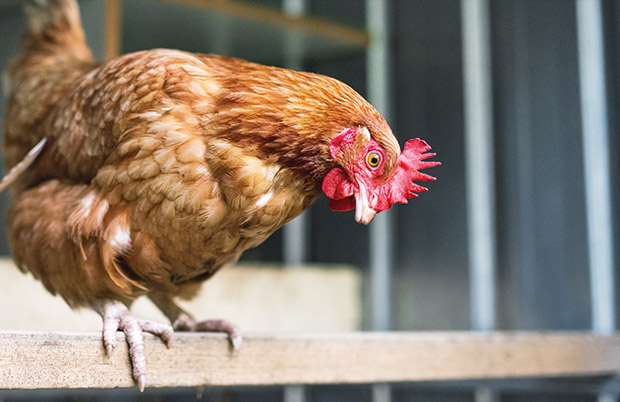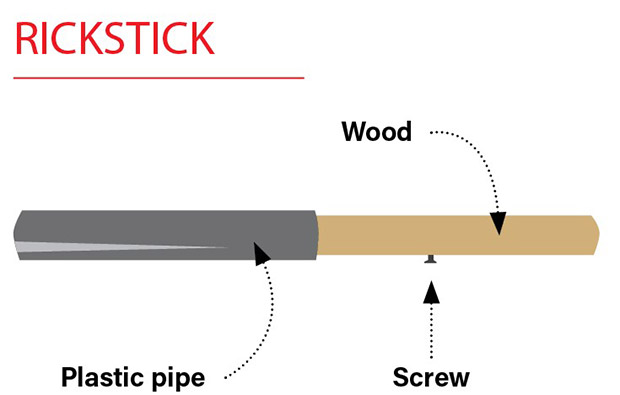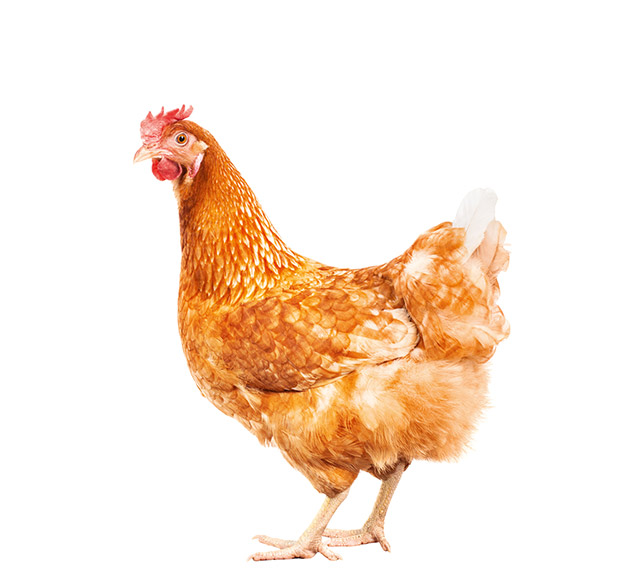2 easy ways to make a red mite trap at home PLUS the biggest red mite mistakes

These useful DIY tools will help you fight the biggest, smallest pest in the poultry world.
Words: Nadene Hall
Red mites are one of the smallest pests, often impossible to see in the dim light of a coop. Worldwide, they are one of the most significant pests that affect poultry, causing discomfort, anaemia, disease, loss of egg production, and death.
It can be difficult to spot red mites, as they hide in the framework of a coop by day, only coming out at night to feed. That makes it hard to know if numbers are building up.
Once mites are easily seen, they are present in incredibly high numbers, and it will take a lot of time and diligence to bring the infestation under control.
Your hens will give you clues of a bad red mite infestation, including:
• laying eggs on the floor or outside the coop (as nest boxes are a prime spot for mites);
• avoiding their coop;
• higher levels of preening, head-scratching, and gentle feather pecking;
• feathers will begin to look scruffier.
1 EAST WAY TO FIND A RED MITE PROBLEM WHILE IT’S SMALL
The best strategy is to monitor red mite levels daily. They hide away during the day, in tiny crevices – research shows their preference is 2mm-wide gaps in wood or plastic – so it can be hard to tell when a tiny mite population starts to grow.
These two DIY options will give you an easy-to-check, daily monitoring system:
1. The rickstick

You will need:
a 10cm length of plastic pipe, approx diameter 20mm;
a 12cm length of rounded wood, slightly smaller than the plastic pipe
1 screw
2 cable ties
METHOD
The exact diameter of the pipe and round wood isn’t important, but keeping it small makes it easier to attach to your coop.
Sand any burrs off the end of the round wood and the plastic pipe. Screw the screw in the middle of the piece of round wood.
Insert the piece of round wood into the pipe. Use the cable ties to attach the rickstick to a perch or place it inside a nest box. The screw prevents chickens from being able to pull the wood out of the pipe, and mites will tend to congregate around it.
2. The simple passive tape trap
You will need:
a roll of 3cm-wide blue painter’s tape
METHOD
Cut a few 8cm lengths of tape. Tuck the ends over so it’s easy to unwrap it when you check the trap. Wrap the tape around perches and/or part of the coop frame. Leave a small gap near the wood for the mites to crawl into.
MONITORING RED MITE TRAPS
Check the rickstick or tape every day. Small numbers of red mites will almost always be present, even in the most
well-maintained coop. What you’re looking for is an increase in numbers.
No action required: 0-9 mites
Action required: 10+ mites
THE 2 BIGGEST MISTAKES PEOPLE MAKE WHEN FIGHTING RED MITES
The most cost-effective way to control a red mite infestation is to start when numbers are still low. But a lot of people don’t monitor their coops, so they don’t know they have red mites until there is a heavy infestation. This requires a much bigger control effort, over a longer time.

The second biggest mistake people make – and this includes commercial farmers – is not using mite-fighting products correctly, whatever product they choose.
For best control of red mites:
1. Start when the mite population is beginning to increase, which requires daily monitoring;
2. Always read and follow product instructions;
3. Whatever product you choose, it must be applied at the correct dilution, in the manner recommended by the manufacturer;
4. Apply products over the recommended period, some every day for a set number of days, or some at set intervals, eg every 7-10 days;
5. Apply the product in the recommended manner, for example as a spray, or soaking the wood and leaving it to dry.
PREVENTING RED MITE INFESTATIONS
Scientists are currently working on vaccines to protect chickens from red mites. There are also studies looking at possible biological control options using predator insects that kill the red mite but don’t harm the chickens.
Some commercial poultry farmers in Europe use special perches (eg, the Q-perch) which have wires that electrocute the mites before they reach the bird.
Research has found taking some basic practical steps can help prevent a red mite population build-up, including:
•using a silicone sealer to fill small gaps in wooden frames of the coop, and around perches;
•painting wooden frames so mites are easier to spot, and the wood is easier to clean and disinfect;
•controlling mice, rats, and flies which can carry red mites;
•keeping wild birds out of the coop, and away from feeders and waterers;
•regular cleaning of feeders, waterers, and nest boxes.
Love this story? Subscribe now!
 This article first appeared in NZ Lifestyle Block Magazine.
This article first appeared in NZ Lifestyle Block Magazine.
